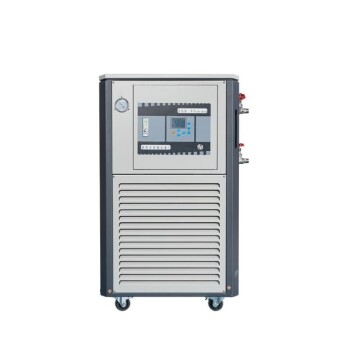Unlocking the Deep Freeze: How Cascade Systems Conquer Temperature Limits
Ultra-low temperature (ULT) freezers preserving materials at -80°C and below represent one of modern science's critical storage solutions. But what enables these freezers to achieve temperatures impossible for standard refrigeration? The answer lies in cascade refrigeration technology—a multi-stage approach that systematically overcomes thermodynamic barriers single-stage systems can't surmount.
The Thermodynamic Barrier: Why Single-Stage Systems Fail at Ultra-Low Temps
Standard refrigeration hits a wall around -40°C due to fundamental physics. As temperatures drop:
- Refrigerant properties degrade: Most refrigerants lose pressure differential capacity when approaching their boiling points at ultra-low temps
- Compressor limitations occur: Single compressors struggle to create sufficient pressure ratios for extreme temperature drops
- Energy inefficiency skyrockets: Attempting deep cooling in one stage requires excessive power with diminishing returns
Research shows single-stage systems become impractical below -50°C, making them unsuitable for preserving sensitive biological samples or specialized chemicals requiring stable -80°C environments.
Cascade Architecture: Linking Refrigeration Stages for Progressive Cooling
Cascade systems solve these limitations through sequential cooling stages:
-
High-Temp Circuit: The First Stage of Heat Removal
- Operates at -30°C to -50°C using standard refrigerants
- Pre-cools the second stage's condenser
- Handles ~60% of total heat load
-
Low-Temp Circuit: Achieving the Crucial Ultra-Low Range
- Uses specialized refrigerants (e.g., R508B) stable at extreme lows
- Leverages the pre-cooled condenser from Stage 1
- Finalizes cooling to -80°C and below
This staged approach reduces the temperature differential each circuit must handle, avoiding the thermodynamic pitfalls of single-stage attempts.
Core Components and Their Critical Roles in Cascade Operation
Compressors: Driving Refrigerant Through Dual Circuits
Each cascade stage employs dedicated compressors optimized for their temperature range:
- High-stage compressor: Standard refrigeration compressor handling moderate temps
- Low-stage compressor: Built for high pressure ratios with special lubricants preventing cold-weather thickening
Condensers & Evaporators: The Heat Exchange Hubs Linking Stages
The system's intelligence lies in how these components interconnect:
- Inter-stage heat exchanger: Where the high-stage evaporator cools the low-stage condenser
- Forced air circulation: Ensures even heat transfer across all surfaces
- Steel plate exchangers: Preferred for durability at temperature extremes
Expansion Valves: Precise Control for Temperature Drops
- Thermostatic expansion valves (TXVs): Maintain optimal refrigerant flow as conditions change
- Multi-orifice designs: Handle varying pressure differentials between stages
Refrigerant Selection: The Lifeblood of Each Stage
Stage | Typical Refrigerant | Critical Properties|---|--- High-Temp | R404A | High latent heat capacity Low-Temp | R23/R508B | Stable boiling point below -80°C
Operational Realities and Advantages of Cascade Technology
Energy Efficiency Considerations in Multi-Stage Systems
While cascade systems appear complex, they actually improve efficiency by:
- Distributing the cooling load across optimized stages
- Reducing compressor workload through inter-stage heat exchange
- Cutting energy consumption by ~40% compared to overpowered single-stage attempts
Overcoming Heat Rejection Challenges at Ultra-Low Temps
The cascade approach elegantly solves heat rejection issues:
- The high-stage handles most heat removal at warmer, more efficient temps
- The low-stage only manages the final temperature increment
- Tubular condenser batteries maximize surface area for heat transfer
Ensuring Reliability and Temperature Stability for Critical Storage
For laboratories preserving vaccines, cell lines, or forensic evidence:
- Dual-circuit redundancy: If one stage falters, the other maintains partial cooling
- Faster recovery: After door openings, staged cooling restores temps quicker
- ±2°C stability: Critical for sensitive biological materials
Discover how KINTEK's ultra-low temperature solutions can safeguard your most sensitive samples. Our cascade refrigeration-equipped freezers combine thermodynamic precision with laboratory-grade reliability—ensuring your critical materials remain protected at temperatures standard systems can't reach. Explore our range designed specifically for research and medical storage needs.
Related Products
- 108L Vertical Ultra Low Temperature ULT Freezer
- 938L Vertical Ultra Low Temperature Freezer for Advanced Laboratory Storage
- 808L Precision Laboratory Vertical Ultra Low Temperature Freezer
- 708L Ultra Low Temperature Freezer High Performance Laboratory Freezer
- 608L Essential Laboratory Ultra Low Temperature Freezer For Critical Sample Preservation
Related Articles
- Freeze-Drying Decoded: The Science Behind Preserving Food, Medicine, and Research Materials
- How Freeze-Drying Protects Delicate Biological Structures During Water Removal
- How ULT Freezers Protect Scientific Discoveries in Genetics and Drug Development
- Why Freeze-Drying is Indispensable for Preserving Sensitive Samples
- Why Ultra-Low Temps are Non-Negotiable: The Science Behind Preserving Critical Biological Materials




















